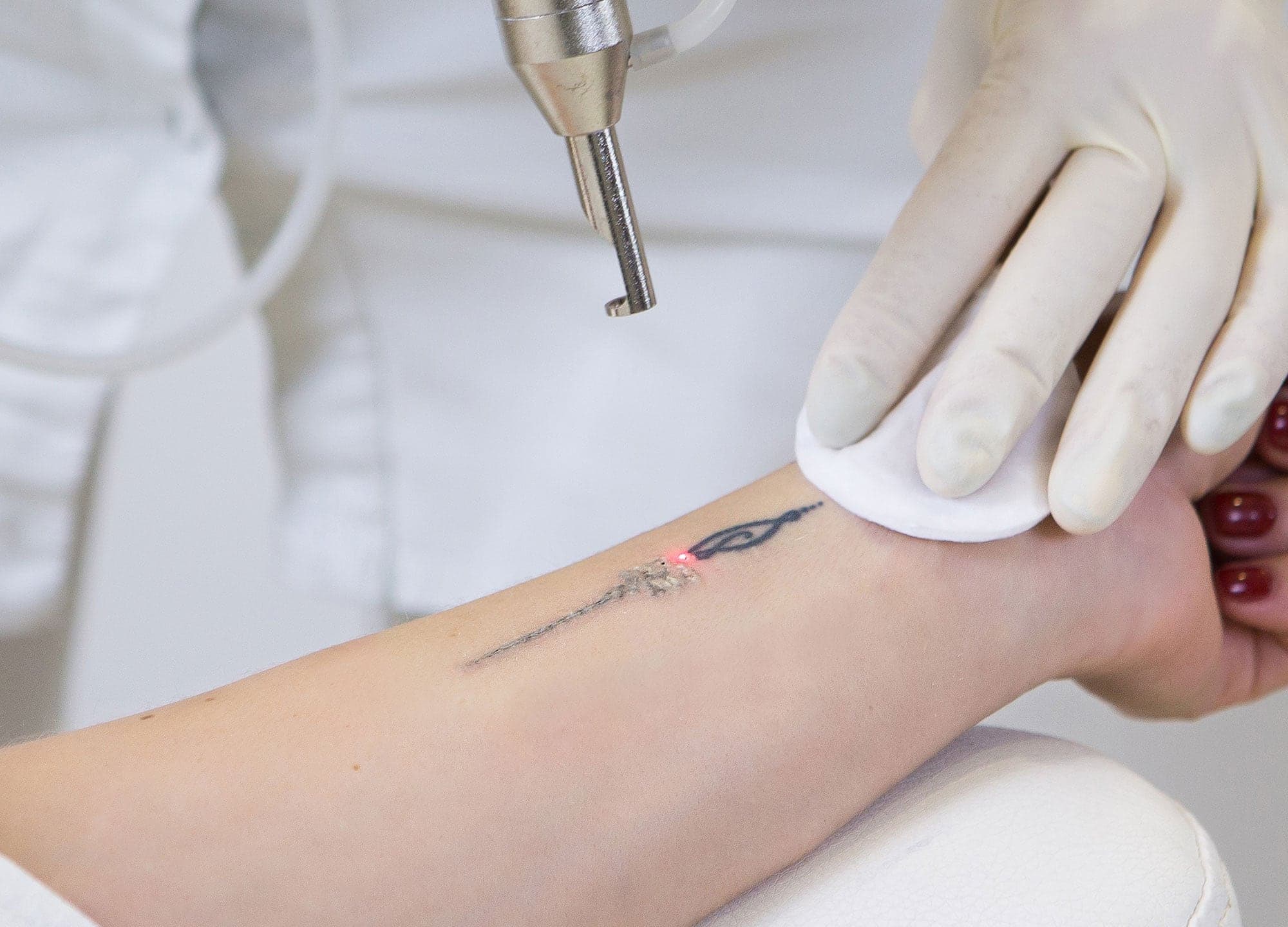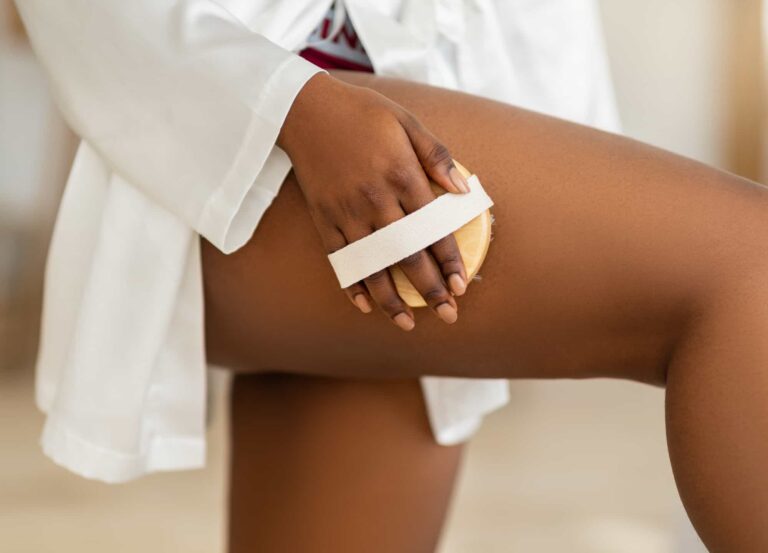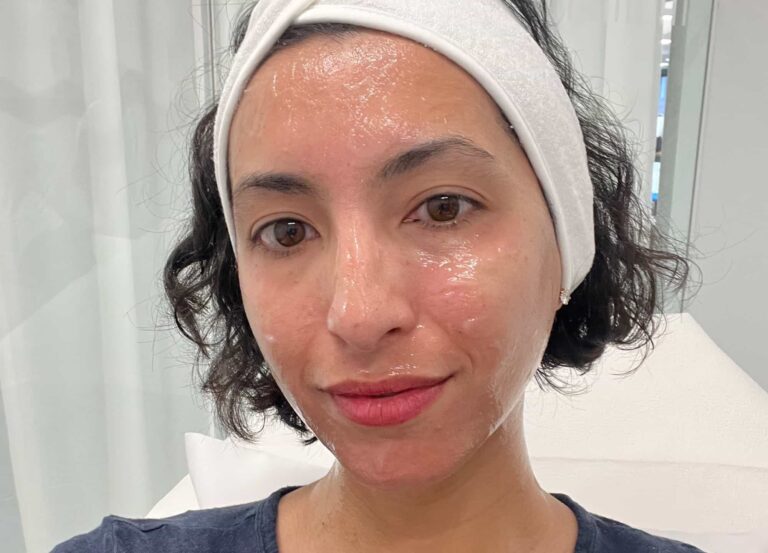You’ve probably heard it before: the removal hurts worse than the tattoo. It’s become an all-too-familiar cliche to get inked on a whim, only to have to wrestle with the consequences—round after round of painful laser treatment that’s reminiscent of a harsh, concentrated sunburn.
But there’s more to laser tattoo removal than you think. There’s a whole host of factors that contribute to how quickly, or effectively, your tattoo will be removed—not the least of which is your skin pigment. While color, size, and ink also factor in, fundamentally, you can best understand your skin’s response to lasers by learning a little more about its type. Enter the Fitzpatrick scale.
What is the Fitzpatrick scale?
Though it was originally created to categorize the scale of skin tones, New York City board-certified dermatologist Dr. Michele S. Green explains that we owe the Fitzpatrick scale for our understanding of how skin reacts to UV rays. If you always burn, for example, and never tan, then you most likely fall into skin type I. There are six types in total, ranging from very light in coloration through to dark-brown, melanin-rich skin.
“Identifying your Fitzpatrick skin type can help you to discern the best skin-care treatments for you as well as help you to understand the best methods for preventing issues such as skin cancer and premature aging,” says Dr. Green.
Fitzpatrick scale skin types
Skin type I: Pale skin that burns very easily and never tans. Individuals with this skin type usually have eyes that are blue or green and hair that is blonde or red.
Skin type II: Fair skin that almost never tans and instead burns most of the time. People with this skin type usually have blonde hair and gray or blue eyes.
Skin type III: Skin that is fair, with a golden undertone. Individuals with this skin type usually have eyes that are brown or hazel in color and hair that is brown or dark blonde. They may burn but usually tan easily.
Skin type IV: Skin that is light brown or brown, with an olive undertone, accompanied usually by dark brown eyes and hair. People with this skin type may sometimes experience a mild sunburn, although they tend to tan uniformly.
Skin type V: Skin that is brown to dark brown, with eyes that usually are dark brown and hair that is black or dark brown. Individuals with skin type V burn very minimally in the sun and almost always tan.
Skin type VI: dark brown to black skin, brown or brown-black eyes, and black hair. Individuals with this skin type generally never burn when in the sun and almost always tan.
Related: 6 Women Share Their Most Regrettable Tattoo—and How Much They Paid to Remove It
How does your skin type affect your tattoo removal process?
Your skin type dictates which laser setting will work most effectively on your tattoo. Dr. Green says that patients with Asian, Hispanic, or African heritage mostly fall into skin type III or higher and are more susceptible to the negative repercussions of laser treatment, such as hyperpigmentation; hypopigmentation; and permanent, visible damage. Essentially, the more melanated the skin, the higher the risk of the pigment itself (not the ink) absorbing the energy, which can lead to blistering and scarring.
There are three types of lasers used for tattoo removal: the Q-switched ruby, Q-switched alexandrite and Q-switched Nd: YAG—the latter is key for colored tattoos (different wavelengths can be used for red vs. blue pigments), whereas the ruby and alexandrite better tackle black, green, and blue ink. Patients have reported that the alexandrite laser can cause more hypopigmentation side effects than the ruby, but generally, allergic reactions to Q-switched ruby and Nd:YAG lasers are minimal. It’s important to note that it’s rare that one laser system alone can treat a multicolored tattoo, because of the different combinations of inks and colors.
“The laser works because the pigment from the tattoo absorbs the laser energy and is destroyed,” Dr. Green explains. “Different wavelengths can be utilized for patients of different skin types in order to prevent any unwanted side effects. Prior to performing laser tattoo removal, a test spot can be performed, to ensure that the laser is safe for the skin.”
Dr. Joel Schlessinger, a board-certified dermatologist in Omaha, Nebraska, says he rarely uses lasers on skin types greater than IV without first carefully preparing the skin with Retin-A or hydroquinone (hydroquinone helps to lighten areas of the skin, whereas Retin-A aids with healing post-procedure). He notes there are some laser machines on the market (such as the Astanza Duality Q-switched Nd:YAG) that can combine multiple wavelengths with settings that work well with dark skin, but even these can be “finicky.”
How much does laser tattoo removal cost?
If you committed to a giant dragon on your body a decade ago, chances are that its removal is going to be expensive. Not only can individual sessions set you back anywhere from $400 to $1,000, according to Dr. Green, but the geographical location and experience level of your laser treatment provider can greatly impact the total cost. Dr. Schlessinger reveals that he also tends to anesthetize prior to treatment, which can increase the price.
How long does laser tattoo removal take?
If you have light skin, you’re probably slightly better off when it comes to more efficient tattoo removal, as those with dark skin types are ultimately going to require more sessions in order to blitz every last line.
Both Dr. Green and Dr. Schlessinger say it’s difficult to predict how many laser treatment sessions a tattoo requires without seeing the piece in person, although 6–10 treatments is the average. It’s important to note, every session must be scheduled a minimum of 8 to 12 weeks apart, which means removal can take up to two years.
“Sessions can range from 5–20, depending on the tattoo and the colors within it,” explains Dr. Schlessinger. “Green and red tend to be very difficult colors to remove, and since dyes aren’t standardized, there can be variable results, based on that, as well as variable results due to the depth of placement by the tattoo artist.”
Both dermatologists note that black tattoos are easier to remove than their color counterparts. The Q-switched Nd:YAG works well on black tattoos by emitting longer wavelengths at shorter pulses while avoiding damage to the melanin. Newer tattoos are also prone to faster removal, since the ink hasn’t yet penetrated as deeply into the dermis.
“The age of the tattoo, the size of the piece, the colors, and the types of ink used for the tattoo all impact the overall response to treatment and can influence how many total sessions are required,” adds Dr. Green.
This can be quantified by a point system known as the Kirby-Desai Scale. Accounting for skin type, ink density, tattoo scarring, and placement/size, the scale combines each factor of your tattoo and skin to provide an estimated number of laser treatment sessions. The darker your skin or the more color in your tattoo, the more sessions it will take to remove your ink. This is particularly helpful on the off chance that you truly have no idea what you’re getting yourself into in terms of time, price, and pain.











